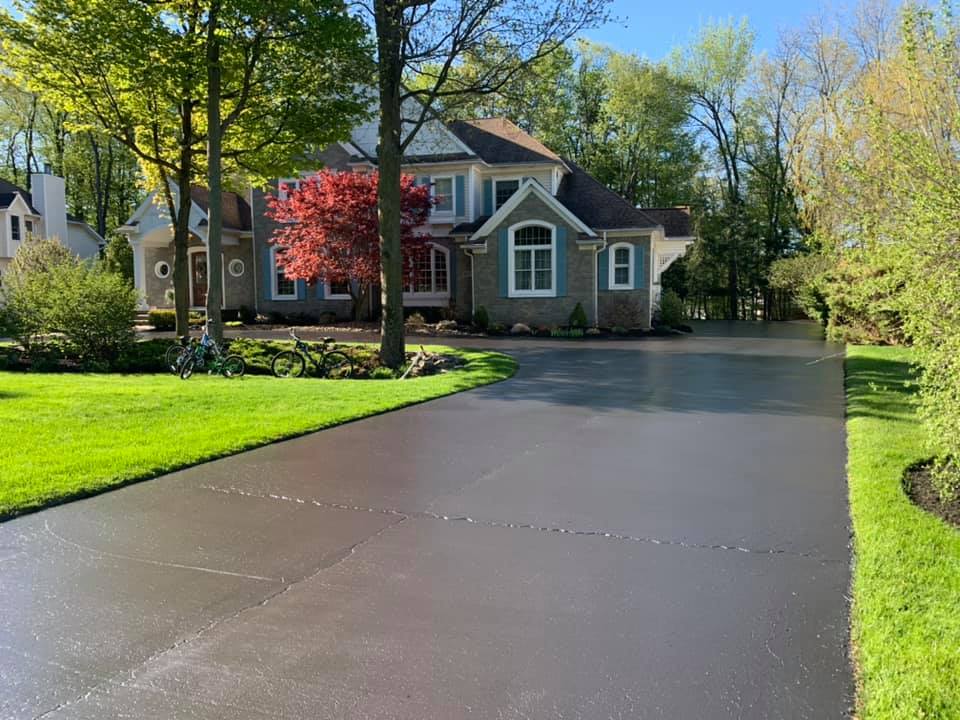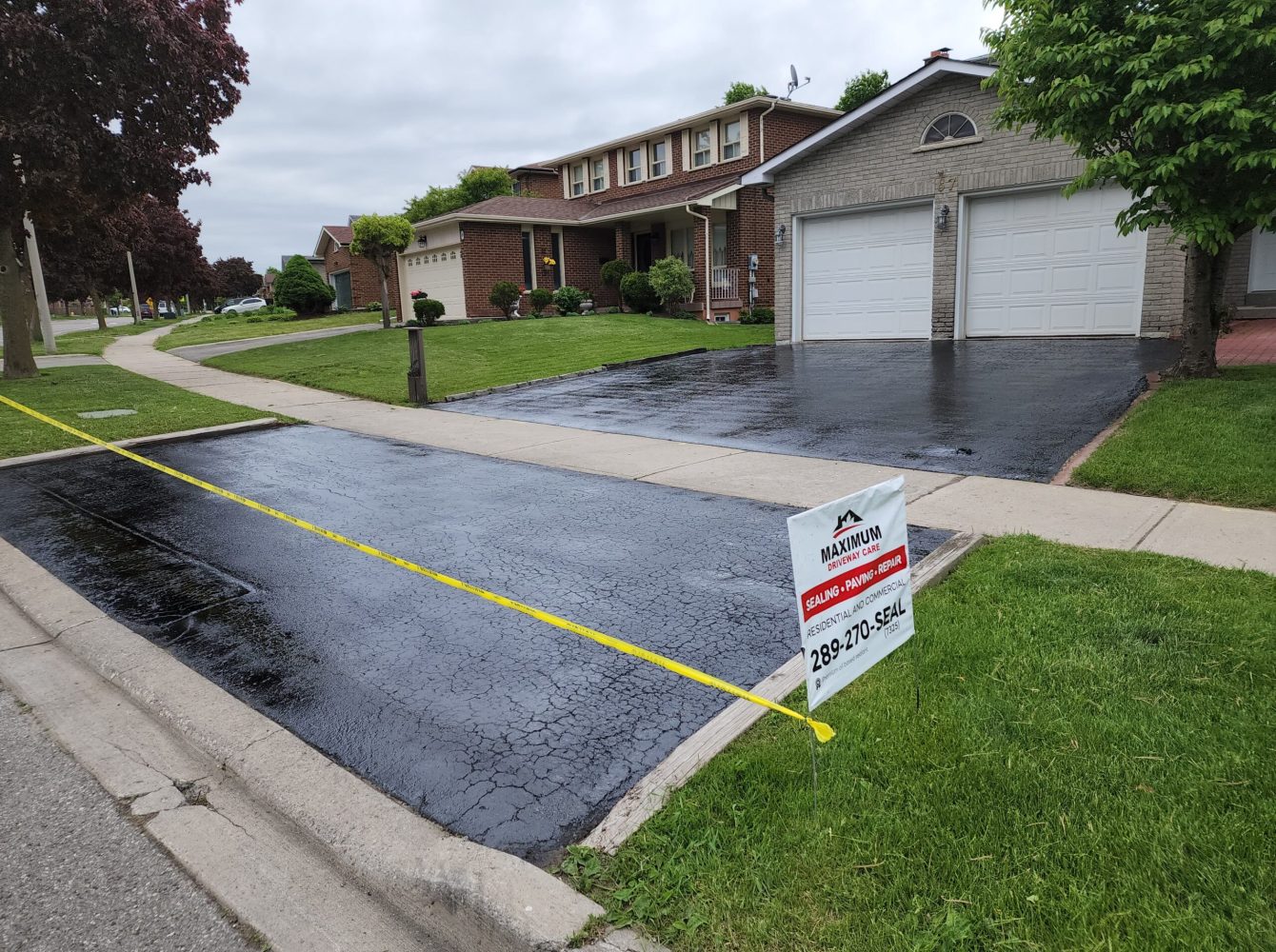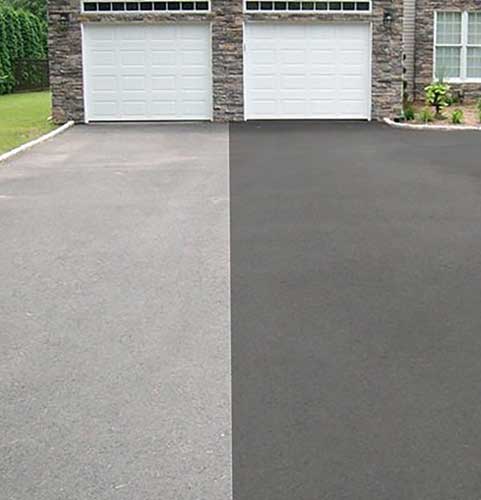Let loose the Prospective: Regrading and Asphalt Sealing for Commercial Areas
Let loose the Prospective: Regrading and Asphalt Sealing for Commercial Areas
Blog Article
Hot Mix Asphalt: A Lasting Solution for Pavement
Warm Mix Asphalt (HMA) has actually arised as a leading sustainable option for pavement services, supplying a myriad of environmental advantages and cutting-edge technologies. Its capability to reuse products and decrease energy consumption presents a compelling situation for its adoption in roadway building projects. In addition, the long-lasting efficiency and longevity of HMA make it a preferred alternative for framework growth. As the need for environment-friendly construction methods grows, checking out the subtleties of HMA's sustainability can give useful insights right into the future of pavement options.
Ecological Benefits of Hot Mix Asphalt

In Addition, Hot Mix Asphalt helps to alleviate urban heat island impacts. Its dark color absorbs sunlight, lowering the amount of warm reflected back right into the atmosphere contrasted to lighter-colored pavements. This can lower ambient temperatures in city areas, decreasing the demand for cooling and eventually lowering energy consumption.
Furthermore, Warm Mix Asphalt adds to boosted stormwater monitoring. Its permeable nature enables water to penetrate the pavement and reenergize groundwater products, lowering overflow and the threat of flooding. These ecological advantages make Hot Mix Asphalt a sustainable choice for paving roads and highways.
Power Effectiveness in HMA Production
Is energy performance an essential factor in the production of Hot Mix Asphalt (HMA)? Power plays a significant function in the manufacturing of HMA, influencing both price and environmental sustainability. One vital facet of power effectiveness in HMA production is the usage of cozy mix asphalt (WMA) technologies.
Additionally, developments in plant modern technologies have actually led to even more energy-efficient HMA manufacturing processes. Modern plants are created with features like recycled asphalt pavement (RAP) processing capabilities, reliable burner systems, and enhanced insulation, all adding to power financial savings. By maximizing energy usage in HMA production, the industry can lower its carbon footprint while keeping high-quality pavement materials. Energy effectiveness is, consequently, a critical consideration in making sure the sustainability of Hot Mix Asphalt manufacturing.
Recyclability of Warm Mix Asphalt
The recyclability of Warm Mix Asphalt (HMA) is a crucial facet of its sustainability and long-lasting ecological influence. HMA is among the most recycled materials in the United States, with over 100 million lots of reclaimed asphalt learn this here now sidewalk (RAP) being reused yearly in new sidewalk building. Recycling HMA provides several ecological benefits, such as minimizing the need for virgin materials, reducing power intake throughout manufacturing, and reducing the quantity of waste sent out to landfills.
The procedure of recycling HMA entails grating the existing pavement, crushing it right into smaller sized items, and blending it with brand-new accumulation and asphalt binder to produce a recycled mix. Overall, the recyclability of HMA plays a considerable role in advertising sustainable practices within the sidewalk sector.

Long-Term Performance of HMA
Asphalt pavements demonstrate resilience and resilience over an extended duration, reflecting the long-term efficiency of Hot Mix Asphalt (HMA) In addition, innovations in HMA technology, such as the usage of polymer-modified binders and warm mix asphalt, have even more enhanced the toughness and long life of HMA pavements. By prioritizing high quality building and maintenance practices, HMA proceeds to confirm itself as a lasting and cost-effective option for lasting pavement infrastructure.

HMA: Longevity and Sustainability
Demonstrating both durability and sustainability, Hot Mix Asphalt (HMA) has actually come to be a keystone in the construction of resilient pavement infrastructures - regrading. HMA's longevity originates from its capability to endure heavy lots, harsh climate condition, and high website traffic quantities, making it a reliable selection for roads, highways, and airport runways. The make-up of HMA, which normally consists of aggregates, binder, and filler, plays a vital published here role in improving its long life and resistance to deterioration
Moreover, HMA's sustainability exists in its recyclability and energy-efficient production procedure. The ability to recycle redeemed asphalt pavement (RAP) in brand-new HMA blends minimizes the demand for virgin materials and lessens the environmental influence of sidewalk building and construction and maintenance. In addition, the energy efficiency of generating HMA depends on its lower blending temperatures contrasted to various other sidewalk materials, resulting in minimized power usage and greenhouse gas emissions.
Final Thought
In conclusion, warm mix asphalt (HMA) offers a sustainable option for pavement with its eco-friendly attributes. HMA's recyclability, energy effectiveness in manufacturing, and lasting sturdiness make it an environment-friendly selection for road construction. By preserving natural deposits, lowering waste, and lowering greenhouse gas discharges, HMA plays an important role in advertising sustainability in framework development. Its capability to minimize city warmth island results further highlights its value in producing eco aware and durable pavement systems.
HMA is one of the most recycled materials in the United States, with over 100 million loads of redeemed asphalt sidewalk (RAP) being recycled yearly in brand-new sidewalk building and construction.The process of recycling HMA entails grating the existing pavement, crushing it into smaller pieces, and mixing it with new read the article aggregate and asphalt binder to create a recycled mix.Asphalt pavements demonstrate durability and resilience over an extended duration, mirroring the long-lasting efficiency of Hot Mix Asphalt (HMA) In addition, advancements in HMA technology, such as the usage of polymer-modified binders and cozy mix asphalt, have even more boosted the resilience and durability of HMA pavements. The capability to reuse reclaimed asphalt pavement (RAP) in new HMA combinations lowers the need for virgin products and lessens the ecological impact of sidewalk building and construction and upkeep.
Report this page